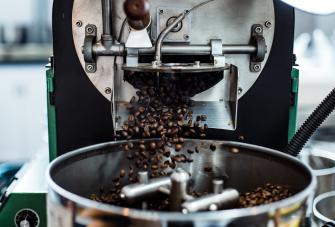How Much Do Food Trucks Make?
Food trucks are super popular, and demand for these mobile kitchens is growing. In the United States alone, the food truck industry is valued at over $2 billion. What’s more, food trucks are growing 1.1% faster than commercial restaurants.
If you’re looking to start a business in a booming industry, look no further than the world of food trucks!
That said, how much do food trucks make? Likewise, how much does it cost to start and operate these trucks?
Keep reading to get answers to these questions and more!
Food truck revenue — how much can you expect?
Although food trucks all serve different purposes and various markets, they all aim to achieve one goal: make money.
In 2017, Food Truck Empire got in touch with 300 full-time food truck owners about their businesses. The company wanted to see how much income a typical truck generated annually.
Here is the data gathered from the 233 business owners who responded:
|
Annual Gross Income |
Responses |
% |
|
Over $200,000 |
48 |
21.52% |
|
$150,000 – $199,999 |
67 |
30.04% |
|
$100,000 – $149,999 |
76 |
34.08% |
|
$50,000 – $99,999 |
24 |
10.76% |
|
Less Than $50,000 |
8 |
3.59% |
Now, this data is not scientific since the respondents were only from California, Florida, New York, Texas, and Oregon. Likewise, the sample size is too small given that there are 23,873 food truck businesses in the US.
However, it does show you a rough idea of the type of income you can expect as a food truck owner. Keep in mind that this is revenue, not profit.
After paying for expenses, actual earnings can be much lower. Food trucks vary wildly when it comes to menu items, business models, and markets. Some serve low-cost light bites while others serve restaurant-quality meals. These all will affect their profit margins, but most food trucks end up setting a 6 to 9 percent margin on menu items.
What determines food truck earnings?
When evaluating a business, it’s important to look at revenue. This figure shows us how much raw income the food truck generates before deducting any expenses.
While this does not show the complete financial picture, revenue does show earnings potential. The more revenue, the more profit can be made.
Like any business, revenue is affected by a few key factors such as:
- Sales volume: How many sales does the food truck make during a given period?
- Item cost: How high are the prices for food and drinks?
- Average purchase size: How many items does the average customer purchase at one time?
Tips from a successful food truck owner
In 2020, UpFlip interviewed Kyle Gourlie, owner of the Vet Chef. His business generated over $400,000 in revenue in one year. Since his truck is in an area with a higher cost of living than most (Seattle), these sales figures could be a bit inflated. However, his advice can surely help any food truck owner.
Pricing
For the typical food truck, 30% of revenue will be spent on food costs. While this amount can change based on the qualify of the ingredients and other factors, most businesses should start with a 30% modifier.
To find your menu pricing, you will want to divide the food cost by the percentage of revenue (30%).
For example, let’s say a taco costs $1 to make. How much will you list it for on the menu?
$1 ÷ .3 = $3.33
By pricing the taco at $3.33, you ensure all revenue generated by the sale of the taco can be reinvested in food supplies.
Startup costs and operating expenses
Food trucks are less expensive to open than restaurants, but they still require a considerable investment. For example, Gourlie invested $41,200 in his business before serving his first meal.
Since many people take out loans to start a food truck, the less you spend on startup expenses, the less debt you’ll owe. And with less debt owed, more profit can be generated.
Some common startup expenses include:
- Truck and trailers
- Licenses
- Insurance
- Professional organisations
- Kitchen supplies
- Inventory
- Packaging and utensils
- Marketing materials
- Uniforms
On top of this, you will have recurring expenses once you start operating your business. These will also be deducted from your revenue, impacting your bottom line.
Some common operating expenses to plan for include:
- Parking permits
- Food costs
- Vehicle upkeep
- Packaging and utensils
- Internet and phone
- Insurance
- Marketing
You will not have control over many of these expenses, but you should try to minimise them as much as possible. For example, Gourlie says to reduce labor costs as much as possible, especially in the first year. He also recommends doing as much work as possible on your own to reduce your expenses.
Streamline service
Once the food truck is operational, Gourlie advises owners to make service as efficient as possible. By doing so, you can increase how much revenue your food truck makes. The more customers you can serve in a day, the more income you can generate.
One of the most effective ways to streamline your service is by investing in a quality point of sale system. With this device, you can process orders faster, take more payment types, and automate much of your operational tasks.
Epos Now POS systems can help food trucks by:
- Accepting contactless and digital payments, reducing the time needed to count bills and make change
- Accepting online orders and scheduling pickup times with Epos Now Order & Pay
- Sending digital receipts, reducing paper costs and increasing convenience
- Tracking ingredients in real-time so you know exactly how many meals you can serve




